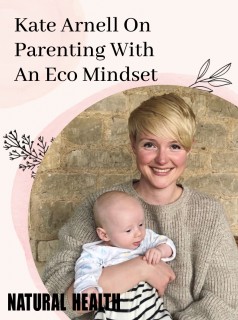By recognising feelings of hurt and anger you can learn to let go, says life coach Eve Menezes Cunningham
By recognising feelings of hurt and anger you can learn to let go, says life coach Eve Menezes Cunningham
I often remind my clients, as well as myself, that the only person we can change is ourselves. Yet it’s easy to get caught up in controlling thoughts.But by changing our own responses to the people we’d dearly like to ‘fix’, we can improve all our relationships . Can you imagine how much better you’ll feel when you learn to let go of all the ‘shoulds’ you actually have no control over?
Radical acceptance doesn’t mean becoming a martyr or a doormat. It’s about honouring your feelings, setting boundaries and accepting yourself, as well as others, as you are.
“If someone mistreats you or if they’ve been abusive, radical acceptance is not saying what they did is okay,” says Tara Brach, (tarabrach.com ), author of Radical Self Acceptance (£22.99, Sounds True Inc). “Instead, it’s about recognising honestly the hurt, fear and anger. You let yourself feel it and express it. You reconnect. When you’ve experienced radical acceptance of that experience, you can create your own boundaries.”
I love my neighbours, but I don’t love the way the children sometimes use my driveway as an extension of theirs and the street. I work from home and the noise really travels. For a long time, I’ve been wishing I wasn’t so sensitive to noise. Or that I was more effortlessly assertive.
By practising radical acceptance and realising that it does bother me and I still have to work pretty hard at being assertive myself, I was able to deal with it. I went out to say (nicely) that, adorable as they are, I work from home and the noise really travels. Would they mind moving their game off my driveway? They were apologetic and moved away.
Creating this boundary felt scary but also liberating. I achieved the peace and quiet I needed to get on with my work but was also filled with guilt. I am currently accepting that, for me, this is where I am right now. It, too, will pass.
Tara says: “Radical acceptance is in two parts. We clearly recognise what’s happening in the present moment and regard what we see with open presence. Step one is recognising ‘What’s happening right here?’ Step two is asking yourself ‘Can I let this be?’”
One day, your partner’s messiness (or tidiness) may feel impossible to live with while, another day, the exact same evidence of this might make you smile. Sometimes, letting something go – whether at work, out and about or in your home – seems like the best thing to do. Other times, setting a boundary (and accepting and honouring your right to do that) shows you that this is not the time to let something just be.
“Some people have an easier time than others,” says Tara. “Put aside a little time to practise coming into the present moment and pausing. First of all, you’re accepting what comes up for you in response to that person. If someone behaves in a way that upsets you, if you can pause even for a minute or two, you’ll connect with much more of an acceptance and be wiser.”
“It’s all about honouring your feelings and setting boundaries”
Take small steps
If you want to become more accepting, but are finding it hard, Tara suggests taking baby steps. “Slow down when things come up: ‘I can’t control this so I let go…’” She recommends setting an intention at the beginning of each day. This may be to be kinder to yourself or to a colleague or a parent, child or partner.
“Once you’ve set your intention, bring to mind a certain person,” says Tara. “Take some moments to reflect. If it’s a person who insulted you, what are they going through? What does that person really need?
By taking time to pause before reacting, you access compassion for yourself and for others. Tara says: “Your own heart is more accepting. Remember another person’s goodness and everyone has goodness. Everyone either wants to be happy or wants to be loved.
“With practice, you’ll notice more capacity for intimacy. There’s no difference between acceptance and love, really. If you think of someone in your life and ask, ‘What would it be like if I were completely accepting of this person?’ this experience is the same as love.
Practising radical acceptance leads you to a pure sense of love, an openness inside of you.”
Tara compares this open, loving, flowing state to the effects of judgment. “It locks you into a very small, fearful self.
Acceptance introduces you to a vastness. The path is really to stop the war. If you’re suffering in some way, you’re at war with someone or yourself. If you let go of it a little, you get a little peace. If you let go a lot, you get a lot of peace.”
Pacing yourself is key. You’ll only feel disappointed in yourself (not very accepting at all) if you try to go from anger or irritation to blissful openness in one step. If you’re not in a peaceful state, Tara says: “Don’t even try to accept what’s difficult. Wait until your mind is a little quieter.”
Seek out peace…
Sometimes letting go seems like the best thing to do
You can help your mind quieten down by paying attention to your breathing. Breathe in and out. Don’t try to change your initial breaths but think about slowing your breathing down when you feel ready to breathe in a more meditative way. Sometimes, something as simple as acknowledging that you feel angry, resentful, anxious, scared or any other emotion that you’re generally less accepting of is enough to shift some of the blocked energy around it.
Tara says: “Do whatever you can to find a little bit of peacefulness. Be willing to take a little time each day in meditation. That kind of training helps people learn how to come home to themselves. Even 10 minutes a day of training the mind to be relaxed will help.”
Case study “I’ve learnt to let it go over my head”
“All my life I have been exasperated by my parents’ behaviour,” says Kelly Bradford, a writer from Surrey.
“This was excruciating when I was a teenager, and I would find myself apologising constantly, but my friends just used to think they were funny. They had me late so have always seemed very old fashioned to me. Again, I would be embarrassed by this.
“I think I came to accept it once I realised I was an adult and not a child in their control. I realised I did not have to accept their bad behaviour and the best way to deal with it was to just ignore it. I knew I did not hold their beliefs on certain issues, but rather than tie myself up in knots of anxiety arguing with them over things, I try now (most of the time) to let it go over my head. If I ignore certain traits rather than react to them it seems to makes them realise that perhaps what they are doing or saying is wrong.
“This has improved our relationship simply because I do not feel like a coiled spring around them all the time. Trying to just accept that people in our lives have traits we do not like sitting alongside the traits we do like will save a whole lot of heartache and negativity. As long as the good points about them outweigh the bad!”
4 ways to accept yourself
1. Instead of thinking about what you (or someone else) keeps doing wrong, switch your focus to all the things you (or they) do well. Maybe you’re not the most organised person on the planet but instead of beating yourself up about it, recognise your creativity, empathy and other positives. Perhaps the person you’re thinking of is forgetful about birthdays but, on a day-today basis, shows their love consistently.
2. Think about the prayer adopted by 12 Step Programmes: God grant me the courage to change the things I can change, accept the things I can’t change and the wisdom to know the difference. Whether or not you believe in God or any kind of spiritual force, you can take time out to think about the situation and wonder whether it’s something you can change yourself or something you need to adapt your reaction to.
3. Experiment with things like Emotional Freedom Technique (EFT). The core statement: “I deeply and completely love and accept myself,” often makes my clients cry. It’s such an unusual perspective to take as we go through life endlessly trying to change. This can be used as a mantra as you learn to love and accept yourself more and more each day.
4. Make time for the things that make you feel more accepting. It might be yoga (which helps people to learn their body’s boundaries and push only to their edge) or something completely different. What helps you love and accept yourself? How can you include more of it in every day?
Article by
Eve Menezes Cunningham
Article by
Eve Menezes Cunningham























